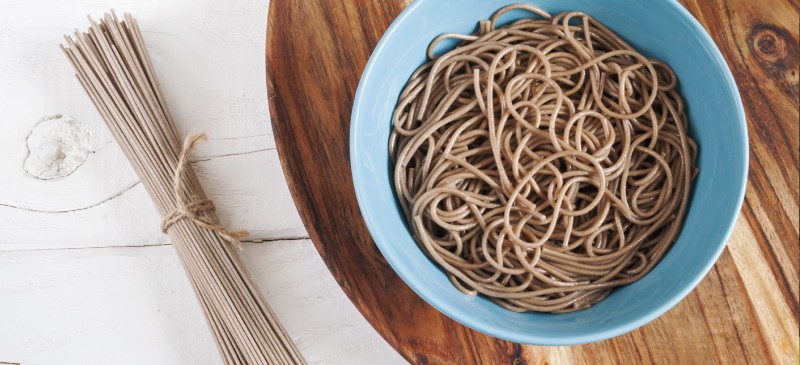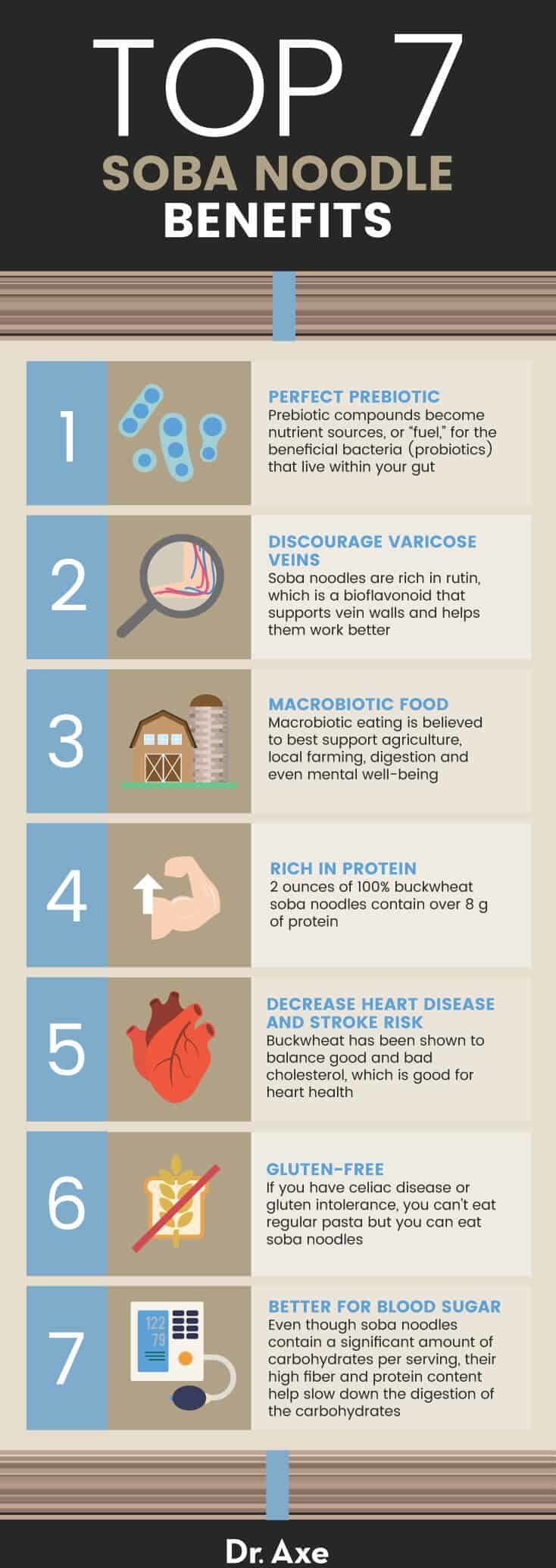This Dr. Axe content is medically reviewed or fact checked to ensure factually accurate information.
With strict editorial sourcing guidelines, we only link to academic research institutions, reputable media sites and, when research is available, medically peer-reviewed studies. Note that the numbers in parentheses (1, 2, etc.) are clickable links to these studies.
The information in our articles is NOT intended to replace a one-on-one relationship with a qualified health care professional and is not intended as medical advice.
This article is based on scientific evidence, written by experts and fact checked by our trained editorial staff. Note that the numbers in parentheses (1, 2, etc.) are clickable links to medically peer-reviewed studies.
Our team includes licensed nutritionists and dietitians, certified health education specialists, as well as certified strength and conditioning specialists, personal trainers and corrective exercise specialists. Our team aims to be not only thorough with its research, but also objective and unbiased.
The information in our articles is NOT intended to replace a one-on-one relationship with a qualified health care professional and is not intended as medical advice.
Soba Noodles: The Gluten-Free Noodles that Combat Heart Disease
September 24, 2018

Looking for an alternative to wheat-based noodles that provide some awesome health benefits? Soba noodles, eaten hot or cold, are loaded with buckwheat nutrition, especially when you make sure to buy the authentic, 100 percent buckwheat variety. Surprisingly, buckwheat is not wheat or even related to wheat. Buckwheat is actually an ancient grain that provides consumers with amino acids, vitamins, minerals and antioxidants. When you buy purely buckwheat soba noodles, they’re not just free of gluten, they also provide some really desirable health benefits from improving digestive function to supporting cardiovascular health. (1)
If you’re watching your waistline, switching to buckwheat noodles from regular white pasta can cut your caloric intake in about half. This is just one of the reasons that soba noodles are considered by experts to be one of the healthiest pastas. (2)
What are soba noodles exactly? They’re noodles made from buckwheat flour that are commonly used in Japanese cuisine. With their rich, earthy flavor, buckwheat noodles make any recipe that much more satisfying and flavorful. They’re also a go-to choice for people following a macrobiotic diet. Looking for stir-fry noodles? Soba noodles are a perfect choice. With their versatility, distinct taste and numerous health benefits, there are a lot of solid reasons to add soba noodles to a healthy, well-rounded diet.
Health Benefits
1. Prebiotic
Essentially, prebiotic compounds become nutrient sources, or “fuel,” for the beneficial bacteria (probiotics) that live within your gut. Prebiotics, together with probiotics, open the door for heightened levels of health in general, so nearly everyone can afford to include them in their diets more often.
Research has shown that higher intakes of prebiotic foods can increase numerous probiotic microorganisms, including Lactobacillus rhamnosus GG, L. reuteri, bifidobacteria, and certain strains of L. casei or the L. acidophilus-group. (4)
2. Discourage Varicose Veins
Varicose veins occur in the body when pressure is placed on blood vessels, resulting in pooling of the blood and bulging of the veins. Varicose veins often affect the legs, since they’re the farthest from the heart and gravity makes it harder for the blood to flow upward. I don’t know anyone who finds varicose veins desirable.
The good news is that there are many varicose vein home remedies, which include dietary changes. Soba noodles are rich in rutin, which is a bioflavonoid that may support vein walls and help them work better, making soba noodles a great food choice for varicose vein avoidance and reduction. (5)
3. Macrobiotic Food
Did you know that soba noodles make the list of acceptable macrobiotic foods? The macrobiotic diet is a plant-based diet rooted in yin-yang theory that stems from Asia. According to macrobiotic theory, balancing yin and yang is accomplished through eating a mostly vegetarian, low-fat diet with a balance of different macronutrients (proteins, carbs and fats), foods that have different energetic qualities, and a wide range of vitamins and minerals from plants. This approach to eating is believed to best support agriculture, local farming, digestion and even mental well-being.
If you’re interested in following a macrobiotic diet or just incorporating some more macrobiotic foods in your diet, soba noodles are a great choice with their highly desirable balance of macronutrients.
4. Rich in Protein
Most of the time, it’s hard to get a significant dose of protein from a noodle, but soba noodles are quite unique in their high protein content. Just two ounces of 100 percent buckwheat soba noodles contain over eight grams of protein. (6) Proteins are literally considered the building blocks of life so it’s crucial to get enough protein in your diet on a daily basis.
Soba noodles are an awesome non-animal source of protein for everyone but especially vegetarians and vegans. Protein foods help increase energy, maintain as well as build new muscle mass, and promote longevity, among other major health benefits.
5. Decrease Heart Disease and Stroke Risk
A study published in the American Journal of Clinical Nutrition looked at the effect of eating buckwheat and oats on heart disease risk factors. Oats and buckwheat both proved themselves to be impressive on the 850 subjects. Buckwheat in particular was found to lower both total serum cholesterol as well as LDL (“bad”) cholesterol. Buckwheat intake was also associated with a higher ratio of HDL (“good”) to total cholesterol. (7) According to the Centers for Disease Control and Prevention, having higher levels of HDL cholesterol can decrease the risk for both heart disease and stroke. (8)
6. A Gluten-Free Noodle
If you have celiac disease or gluten intolerance, you definitely can’t eat regular pasta. Udon noodles, another Japanese noodle, are also off-limits since they’re made from wheat too. Thankfully, soba noodles are a great, nutrient-rich, wheat-free option for anyone who needs to avoid gluten. You just need to make sure that your soba noodles of choice contain 100 percent buckwheat flour, which means there’s no added wheat flour. It’s really important not to assume all soba noodles are gluten-free so read those ingredient labels carefully.
7. Better for Blood Sugar
Even though soba noodles contain a significant amount of carbohydrates per serving, their high fiber and protein content help slow down the digestion of the carbohydrates, which is great news for maintaining normal blood sugar. Studies have even shown that buckwheat has potential to be used in the design of foods with lower glycemic index properties. (9)

What Are Soba Noodles?
Soba noodles originate in Japan, but their popularity continues to grow around the globe. “Soba” is the Japanese name for buckwheat. Soba noodles are a thin strip of fresh or dried buckwheat dough that are boiled before they’re eaten. They’re similar to spaghetti in thickness.
It depends on who is creating the noodles, but typically soba noodles contain at least 40 percent to 100 percent buckwheat flour. (10) Dried soba noodles range in color from light beige to a dark brown, grayish color. A darker brown soba noodle usually means it has a high buckwheat content. Thanks to buckwheat flour nutrition, soba noodles are rich in manganese, magnesium, phosphorus, niacin, zinc, iron, vitamin B6, folate and pantothenic acid.
Nutritionally speaking, soba noodles are a great source of healthy fiber, protein and complex carbs thanks to buckwheat. What is buckwheat? For starters, it’s actually not wheat at all. I know it’s hard to believe judging on its name, but buckwheat is a pseudocereal, not a true cereal grain. Cereal grains (like wheat) come from grass seeds, but pseudocereals come from the seeds of non-grasses. Pseudocereal and cereal grain can be used in similar ways and can even look similar, but they have very different origins. Quinoa and amaranth are other examples of gluten-free pseudocereals.
If you’re aiming to consume buckwheat soba noodles, it’s good to know that there are some noodle dishes with soba in their names, like yakisoba and chukasoba, that do not actually contain buckwheat noodles.
To prepare soba noodles, you simply cook them in boiling water or broth like you would any other pasta. They’re typically cooked for around five minutes or until they’re al dente. An easy and tasty soba noodles recipe simply entails combining tahini with a ginger-based sauce and pouring it over cold soba noodles.
Soba vs. Udon vs. Rice vs. Regular Noodles
How do soba noodles stack up against other noodles?
Soba Noodles
- Authentic soba noodles are made from 100 percent buckwheat flour
- Gluten-free (as long as no wheat flour is added)
- Strong, nutty flavor
- Originate in Japan
- Can be served both cold or hot
- Naturally rich in protein, fiber and nutrients thanks to buckwheat flour
- Soba noodles have more fiber and more protein per serving than udon noodles, rice noodles and traditional pasta
Udon Noodles
- Made from wheat flour and water
- Not gluten-free unless they’re made entirely from brown rice
- Neutral flavor
- Chewy and soft texture
- Thicker and chewier than soba noodles
- A type of Japanese noodle
- Rich in protein, fiber and nutrients when made from whole grain flour
- Often served hot as a noodle soup but can also be eaten cold
Rice Noodles
- Made from rice flour and water
- Gluten-free
- Neutral flavor
- Flatter and softer when cooked than soba, udon or regular noodles
- Higher in protein and other nutrients when made from brown rice rather than white rice flour
- Often eaten hot and put into soups, but can also be used cold in recipes like a veggie pasta salad
Regular Noodles
- Typically made from durum wheat flour mixed with water and/or eggs
- Contain gluten
- Neutral flavor
- Mainly eaten hot but can also be eaten cold
- Typically enriched with iron and B vitamins
- Typically contains less protein per serving than udon noodles, soba noodles or brown rice noodles
Risks and Side Effects
As I said earlier, if you’re looking to avoid wheat and gluten, make sure to purchase soba noodles that are made from 100 percent buckwheat flour.
Buckwheat noodles are loaded with nutrition, but they also contain a significant amount of carbohydrates per serving. For example, a two-ounce serving of 100 percent buckwheat soba noodles contains about 35 grams of carbohydrates. To balance the glycemic load of soba noodles, make sure to include some high-quality protein and healthy fats in your meal.
It’s possible to have a buckwheat allergy. If you have a buckwheat allergy or intolerance, you should avoid soba noodles. You should be especially careful if you follow a gluten-free diet and are allergic to buckwheat since many gluten-free products use buckwheat. Buckwheat is a major food allergen in Korea and Japan. (11)
Final Thoughts
Given their inherent nutrient content as well as the numerous scientific studies, soba noodles really do seem to be one of the healthiest noodle choices these days. It’s really all thanks to their buckwheat flour nutrition, which is rich in manganese, magnesium, phosphorus, niacin, zinc, iron, vitamin B6, folate and pantothenic acid. Soba noodles provide a really balanced dose of nutrition too with an impressive amount of health-promoting protein and fiber.
So whether you’re following a gluten-free, macrobiotic, vegetarian, vegan or a well-balanced whole foods diet, I highly recommend trying soba noodles if you’re not eating them already. They provide beneficial probiotics and protein, can discourage varicose veins, and improve heart health by balancing blood sugar and cholesterol levels — doing all this while also being gluten-free.











